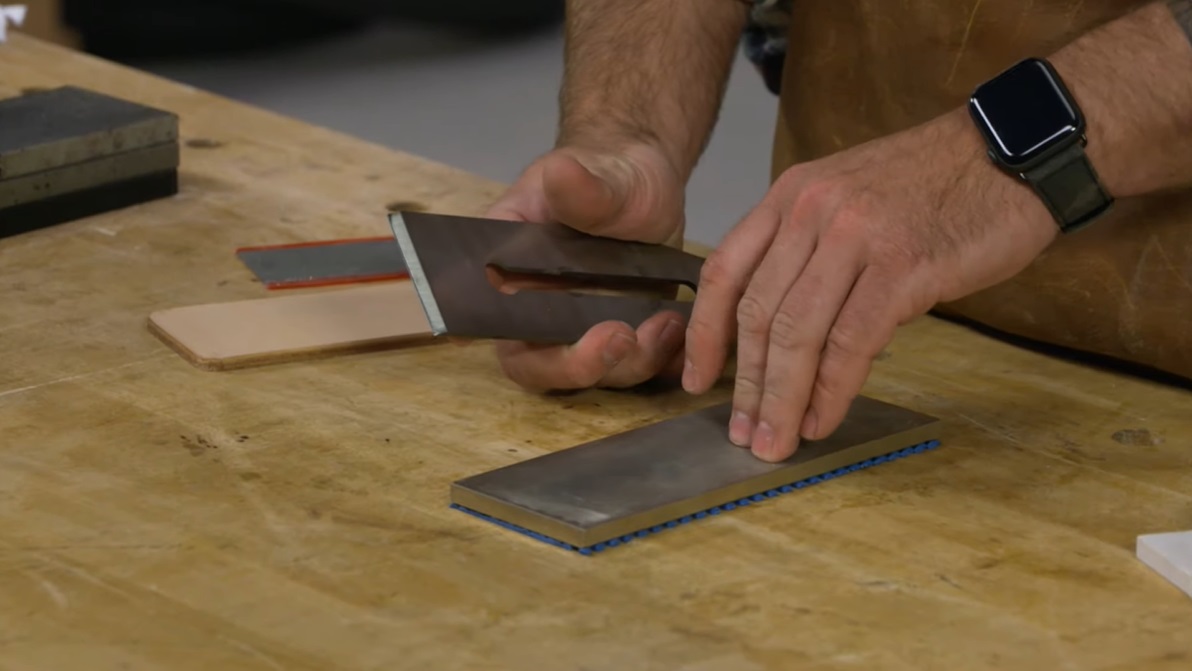I have a couple of tools with skewed blades. I find it a difficult task to sharpen these tools with a standard honing jig. So I built the jig you see here. This jig holds the blade at the proper angle to the sharpening surface so I can hone a perfect edge identically every time I use it.

As you can see in the drawing at left, the jig consists of a block with a fence and a stop to position the tool. Acrylic attached to the bottom of the block allows it to glide over a base that holds a strip of sandpaper for sharpening. Since the jig is built to fit a specific chisel, plane iron, or turning tool, you may need to adjust the size or angle to your needs. I chose MDF to make the base. It’s smooth and fl at, so it makes the perfect base for sharpening. The mitered block is made from hardwood. To finish off the block, I added two glides on each end of the block. The glides are made from acrylic and are glued in place. When the jig is complete, you can clamp it to a worksurface to start sharpening. I cut several extra bases so I can use different grit sandpaper for a progressively finer hone on the blade.

The bevel on top of the block is cut to match the bevel on the blade, as shown in Figure 1 below. The next step is to cut a wide dado so that the block straddles the base (Figure 2). Figure 3 shows you how to cut an angled kerf in the top of the block to match the skew of the blade. Finally, you can cut two pieces of hardboard for a fence and a stop then glue them in place.













